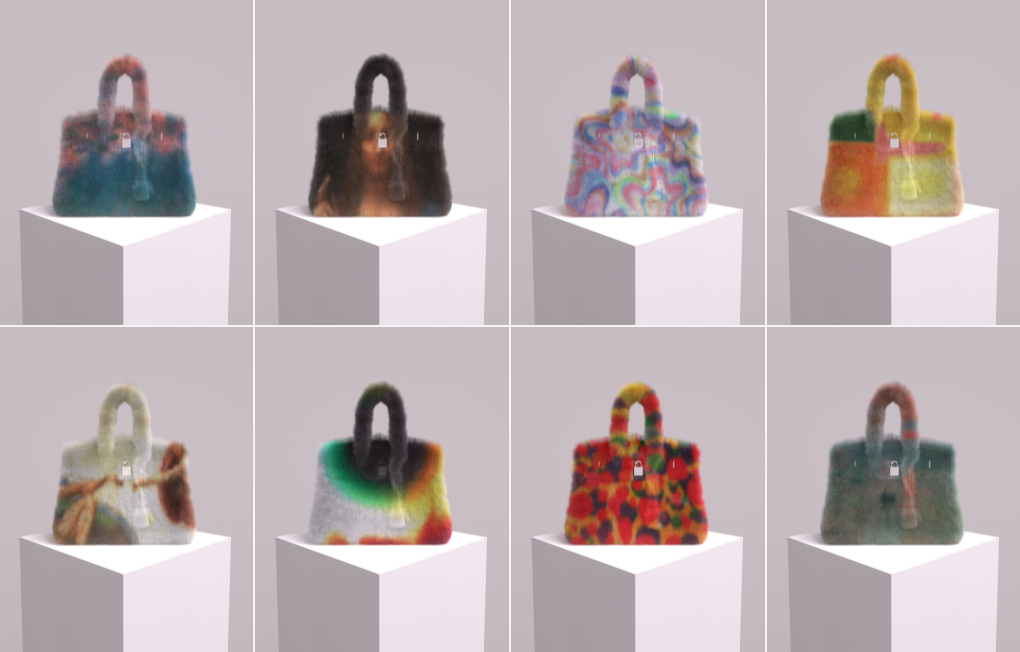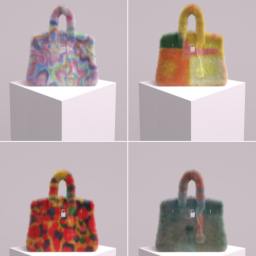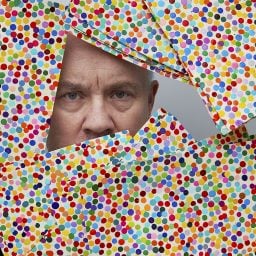French luxury brand Hermès is suing an artist for making knock-off handbags—in the metaverse, that is. The case reveals just how much of a Wild West Web3 remains for artists and businesses alike.
Earlier this month, the company filed a complaint against a digital artist who goes by the name Mason Rothschild, alleging that his series of MetaBirkins NFTs—or virtual recreations of the iconic Hermès handbag—constituted trademark infringement.
The NFTs, which went up on the OpenSea platform in December, were selling for 5 to 25 Etheruem on the secondary market (or between $13,000 and $65,000, based on the current exchange rate). Real Birkin bags can cost between $40,000 and $500,000, according to Business Insider; the MetaBirkins were a bit closer to this price range, reaching into the six figures, before Ethereum crashed this week.
Of the 100 unique NFTs, some feature patterns, such as polka dots and smiley faces, while others are emblazoned with artworks like Vincent van Gogh’s Starry Night and Leonardo da Vinci’s Mona Lisa.
Referring to Rothschild as a “digital speculator who is seeking to get rich quick,” the filing alleges that the artist’s “MetaBirkins brand simply rips off Hermès’ famous Birkin trademark by adding the generic prefix ‘meta’ to the famous trademark Birkin.”
In addition to damages, the company is requesting that an injunction be placed on Rothschild’s NFTs, that all previously minted examples be destroyed, and that the domain for the project’s website be turned over to Hermès.
The case is the first major example of a brand taking legal action over the use of its trademarks in the metaverse, and its outcome may shape the way artists and companies function in this still-unfamiliar territory. Similar, but not identical, disputes surrounding ownership have bubbled up over a series of unauthorized NFT photos of Olive Garden restaurants and Quentin Terantino’s NFTs from Pulp Fiction.
Hermès first sent the artist a cease and desist letter in December. In a post on Instagram, Rothschild was unmoved. “While I am sorry if you were insulted by my art, as an artist, I will not apologize for creating it,” he wrote. The MetaBirkins were removed from OpenSea’s primary market around the same time; they remain delisted.
In his project, Rothschild reimagined the famous designer bags with fake, dyed hair—a gesture that, according to the MetaBirkins website, was “inspired by the acceleration of fashion’s ‘fur free’ initiatives and embrace of alternative textiles.”
A disclaimer at the bottom of the site reads: “We are not affiliated, associated, authorized, endorsed by, or in any way officially connected with the HERMES, or any of its subsidiaries or its affiliates.” (In its suit, Hermès countered that this disclaimer actually made matters worse by “excessively” using the brand’s name and “unnecessarily” linking to its website.)
Rothschild contends his project is within the confines of free speech. “My lawyers… put it well when they said that the First Amendment gives me the right to make and sell art that depicts Birkin bags, just as it gave Andy Warhol the right to make and sell art depicting Campbell’s soup cans,” he wrote in a statement. He called the fashion company’s claims “groundless,” and said he plans to fight them in court. He declined to comment further when reached by Artnet News.
A spokesperson for Hermès and the company’s lawyer, Gerald Joseph Ferguson, also declined to comment.
Rothschild began working on the furry digital artworks following the release of “Baby Birkin,” another NFT inspired by Hermès’s handbag, this time made in collaboration with fellow artist Eric Ramirez and featuring an animation of a fetus. Released last May, it sold for around 13 Ethereum, or roughly $23,500.
The case will be closely watched by other artists and brands. University of Kentucky Law professor Brian Frye told The Fashion Law that fundamental questions about trademark infringement—like whether the product might confuse a good-faith consumer—remain the same in the metaverse as they do in the real world. But brands will, in the future, need to “wrap their heads around what is taking place,” Frye said, “and understand the nature of the claims they want to make and why they want to make them.”









